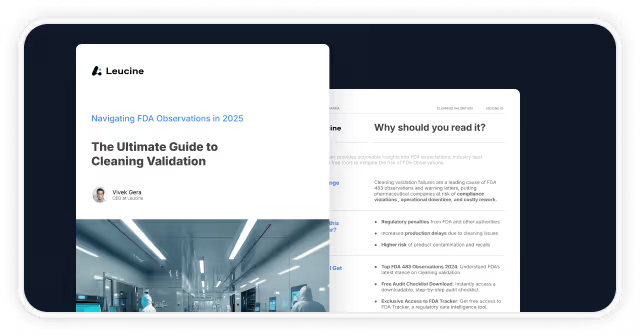
Powered Pharma Operations
Transform Your Pharma Operations with AI-Powered Intelligence. Experience how Leucine's integrated platform brings together manufacturing, quality, and laboratory operations in one digital ecosystem. Schedule a personalized demo to see how our AI solutions can optimize your processes, ensure compliance, and drive operational excellence.
See How AI Transforms Your Shop Floor Operations.
Experience firsthand how Leucine's 10x MES digitalizes batch records, streamlines production, and provides real-time monitoring of your manufacturing operations. Schedule a personalized demo to discover how our AI-powered platform can enhance your productivity while maintaining compliance.
Experience AI-Driven Quality Management in Action.
See how Leucine's 10x QMS automates compliance workflows, streamlines change control, and ensures regulatory adherence. Schedule a demo to learn how our AI-powered platform can help you manage quality processes more efficiently while reducing compliance risks.
Discover Smart Laboratory Operations Management.
Watch how Leucine's 10x LES orchestrates your lab operations, automates documentation, and ensures data integrity. Schedule a demo to see how our AI-powered platform can accelerate your testing processes while maintaining audit-readiness.
















